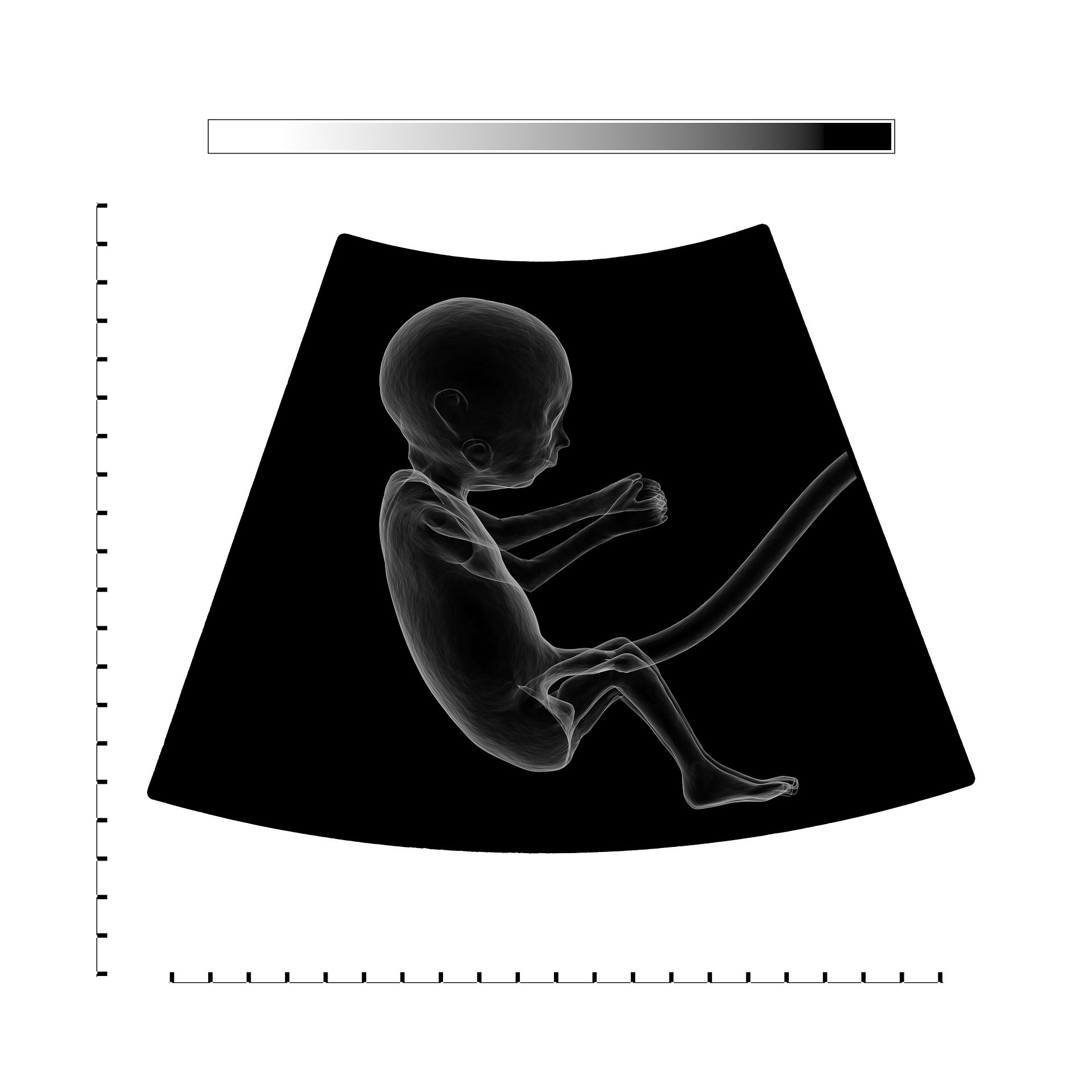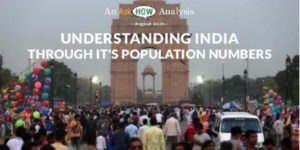How did Haryana stop killing its unborn daughters?featured
Haryana seems to have reversed its practice of discriminating against its unborn daughters. The Sex Ratio at Birth (SRB) for the state has been more than 900 for the last six years. Contrast this with the state’s history. The Child Sex Ratio (CSR) in the state was 819 in 2001 Census and 834 in 2011 Census. [1]. This low ratio was due to sex selective abortion — the practice of determining the sex of fetus and aborting her in case of it being female. How did the state manage to turn things around? That is what this post it about. But first, a short background.

Image by Gerd Altmann from Pixabay
As I have discussed in another post — Missing women in India — low Sex Ratio at Birth (SRB) in a society happens due to three reasons. The first is a strong preference for male child. The second is a widespread availability of technology for determining the sex of a fetus and for a subsequent abortion. The third is low fertility — if couples decide to have fewer children, a strong preference for sons could translate into them going for Sex Selective Abortion. Haryana has a well-documented preference for the male child. It is a relatively prosperous state and many people can afford to pay for technologies for sex determination and subsequent abortion. The fertility in the state is relatively low. These reasons together had driven the SRB in the state below 850. (It is generally agreed that if there is no sex selective abortion, the SRB would be between 942 and 953).
The problem has been well recognized for decades. You can find reports of men in Haryana ‘importing’ brides from other states — a consequence of there being fewer women — from early 2000s. Incidentally, Haryana was not the only state with this challenge. Many states in North and West of India have had very low SRBs. One of the responses of India was the Pre-Natal Diagnostics Techniques (PNDT) Act of 1994. The act made it illegal for a medical professional to determine the sex of a fetus. However, the first conviction under the 1994 act happened only in 2006! The enactment of the law did not scare many people in Haryana and the situation was so bad that there were open advertisements of the type — spend 5,000 now to save 5,00,000 later. A barely concealed hint that a daughter now would mean a hefty dowry later.
Moreover, most complaints under the PNDT Act were for not complying with formalities like registration and not maintaining proper records. A medical professional determining the sex of the fetus would not put the result of his investigation on paper and would be safe as long as he complied with the formalities. To really stop Sex Selective Abortion, you had to catch the medical practitioner in the act.
To catch a practitioner in the act, you need a decoy. Obviously, the decoy needs to be a woman and needs to be pregnant. The Haryana government requested and encouraged pregnant policewomen and other pregnant government officers to work with them. These women would go with other undercover officers and secretly audio and video record their interaction with the doctor. If they were able to get proof of malpractice, they would arrest the offender and file a case against him.
In practice this was not easy to do across many districts with different people in charge of police. The state had to write a robust Standard Operating Procedure (SOP) for teams so that not only were the offenders caught in the act, but also, they could be prosecuted successfully. The central team also had to persuade — sometimes skeptical police officers and CMOs — that there was real political will to go through with these cases.
As the number of cases mounted, the state faced a different problem. Brokers offering these services started recommending practitioners based in neighboring states. Haryana is geographically small and it is not difficult to travel to neighboring Uttar Pradesh, Delhi, Punjab, Rajasthan and Uttarakhand. Regular readers of my blogs would of course know that law and order is a state subject and police from Haryana cannot directly work in other states. Partnerships had to be established with police and political leadership in all these states so that raids and prosecutions could be made in those states as well.
Haryana has registered 889 First Information Reports (FIR) till now [2]. Of these 249 were in neighboring states. The state has managed to get more than thirty convictions. Unfortunately, in India the convicted can get bail pending appeal and appeals can take a very long time. The state of Haryana not only prosecuted vigorously to convict but also fought hard to deny bail to the undertrials. The bail appeals reached Supreme Court in the case of Dr. Anant Ram and the Supreme Court upheld the decision to deny bail.
Of course, practitioners are resisting efforts of the state government. Well established doctors earn a lot and if prosecuted, they can mount a formidable legal and sometimes not so legal defense. There are many cases and counter cases against what the government alleges are ‘repeat offenders.’ But it does seem that the government action has had significant impact.
As I have discussed in my previous post, data from the birth registration system shows that these measures have led to a remarkable improvement in SRB at birth in the state. The SRB is higher than 900 for nearly all districts. Again, as I discussed in my previous post, the civil registration system has its weaknesses. For example, in earlier years the SRB was calculated on the basis of both the births in the year as well as previous year births which came up for delayed registration. When the SRB calculation was changed in 2013, it jumped by nearly 50! This clearly shows that not all births are registered immediately in state. So as outsiders, how can we judge whether the state has really made progress?
I talked to a few people in Haryana asked them for their perception whether there was an actual change on ground. Whether, doctors and brokers are more scared of the law then they used to be? The people I spoke to included an activist / scholar who has worked in this area for a long time. With one exception, the feedback was that the difference is real and this included the feedback from the scholar / activist who does not necessarily have a reason to like the Bhartiya Janata Party (BJP), the party in power. In any case, as Dr Rakesh Gupta, nodal officer for Beti Bachao Beti Padhao, is quoted in this report as saying, “…I am hopeful of Haryana’s CSR reaching 903 females against 1,000 males when 2021 census data is released. We may wipe off the blot of four decades”. We will know for sure soon.
Even if census confirms this welcome trend, the struggle is far from over. Technology can and does change things drastically. Law enforcement in Haryana is coming across mobile vans equipped with portable Ultra Sonography machines. Practitioners now work out of automobiles just outside Haryana border! The machines are imported from China — a country that is a leader both in Sex Selective Abortion and in manufacturing — making them very cheap. Another technological advance that the society would need to grapple with is In Vitro Fertilization. In this technology, sperm and eggs are fertilized together in a test tube and only selected embryos are implanted in the mother’s womb. The selection can easily be for a male offspring. Fertility clinics have started offering services in which male offspring is assured although this is illegal. These challenges however, are for the future. In the meanwhile, we can learn from the state’s success.
Low SRB arises from deeply rooted preference for the male child. The problem of Sex Selective Abortion is acute in many countries in Asia and as far as I can make out, only South Korea has been able to tackle this challenge. I would have assumed that the only way to change the situation is to change mindsets. Laws would not make much of an impact because it is very tough to implement such laws. I have would have been on the side of the people who would have talked of the proverbial behavioral ‘nudge’. The Haryana example shows that I would be wrong.
A consistent, committed and strict Law implementation can be sometimes the best way to tackle serious ills in a society. In Haryana, the proverbial danda trumped the ‘nudge.’ Haryana may have set an example for the rest of the country and maybe many other countries in the world.
Author –
Yogesh Upadhyaya
(Yogesh Upadhyaya is one of the founders of AskHow India. Blogs are personal views.)
You can follow AskHow India (@AskHowIndia) or me (@Uppi89) on twitter or me on LinkedIn
_______________________
[1] The Sex Ratio at Birth is for the births of a particular year whereas Child Sex Ratio is for all children at the time of Census. SRB over a few years and differential mortality of the girl and boy child contributes to CRB.
[2] The number of FIRs is for both those under PNDT act as well as Medical Termination of Pregnancy Act
In general, my writing is positive (describing what is) rather than normative (what should be). However, in my three posts on low Sex Ratios in India, there is an underlying normative (what should be) assumption that low Sex Ratios are bad for the society. Similarly, there is an assumption that Sex Selective Abortion is bad.
This is the thirteenth and the last in a series on population. The first twelve articles can be found here
1. Everything you wanted to know about population (but were too lazy to Google).
2. Are the Acche Din of population growth already here?
3. Chhath — the new national festival?
4. Economic migration in India — The Who, the Why and other good stuff.
5. Islam and population growth in India.
6. Migration and political demography in Assam.
8. Is Haryana becoming Kerala?
9. Matters of Life and Death in India
10. Is everyone really equal in a democracy?



